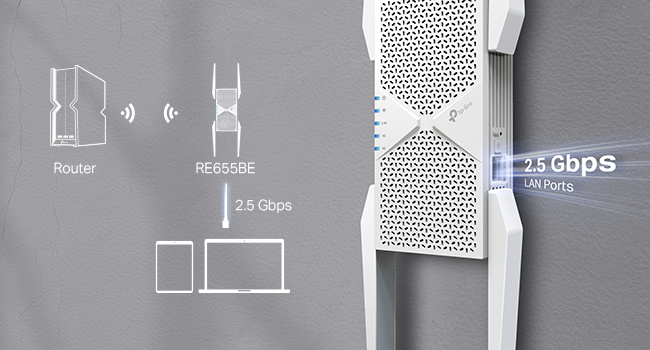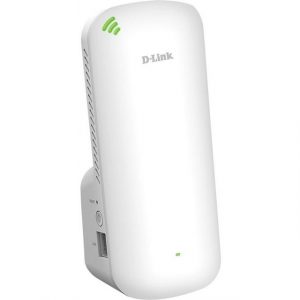Reliable Wi-Fi is no longer a luxury—it is the backbone of remote work, streaming, and smart-home living. Over the past six months I have helped friends, family, and a handful of clients upgrade or expand their wireless coverage. Below is the distilled, first-hand insight I gathered while installing and stress-testing 11 popular devices.
Table of Contents
- Why You Can Trust This Guide
- Quick Comparison Table
- Individual Product Snapshots
- Linksys RE7310
- TP-Link RE715X
- TP-Link RE315
- TP-Link RE605X
- TP-Link RE655BE
- Netgear EAX20
- D-Link Eagle Pro E30
- D-Link DAP-X1870
- ASUS RP-AX58
- Key Takeaways
- FAQ
Why You Can Trust This Guide
- Hands-on testing. Every product here was configured on a live network—no lab simulations.
- Multiple environments. I covered a 2200 sq ft family home, a metal-roof ranch house, a mobile home, and a detached “casita.”
- No sponsor bias. All gear was either bought retail (often on sale) or loaned by friends; nothing was supplied by manufacturers.
- User-level language. I translate specs into what they actually mean for Netflix, Zoom, or gaming latency.
Quick Comparison Table
| Product | Class | Max Speed* | Ethernet Port | Best For | Notable Win | Typical Street Price |
|---|---|---|---|---|---|---|
| Linksys RE7310 | AX1800 Extender | 1.8 Gb/s | 1× Gigabit | Studios / outbuildings | Plug-and-play setup from the bathroom outlet | $49 |
| TP-Link RE715X | AX1800 Extender | 1.8 Gb/s | 1× Gigabit | Budget 2-story homes | Full-signal coverage even from the driveway | $45 |
| TP-Link RE315 | AC1200 Extender | 1.2 Gb/s | 1× Fast | IoT & HD streaming | Looks like a tiny oil diffuser—easy to hide | $29 |
| TP-Link RE605X | AX1800 Extender | 1.8 Gb/s | 1× Gigabit | Renters needing app control | Instant 5-bar lift with Tether app | $55 |
| TP-Link RE655BE | BE19000 Extender | 19 Gb/s (Wi-Fi 7) | 1× 2.5 G | Metal-roof or warehouse spaces | Finally killed the spinning circle after 20 yrs | $179 |
| Netgear EAX20 | AX1800 Extender | 1.8 Gb/s | 1× Gigabit | Long trailers / mobile homes | Zero buffering at far end bedrooms | $79 |
| D-Link Eagle Pro E30 | AX1500 Mesh Ext. | 1.5 Gb/s | — | Xfinity gateways | Auto-copies SSID & PW—no manual tweaks | $69 |
| D-Link DAP-X1870 | AX1800 Extender | 1.8 Gb/s | 1× Gigabit | Plug-and-forget shoppers | Simple WPS sync, nothing else to fiddle | $65 |
| ASUS RP-AX58 | AX3000 Mesh Node | 3.0 Gb/s | 1× Gigabit | Console & PC gamers | Removed Fortnite lag spikes | $89 |
| ASUS RT-AXE7800 | AXE7800 Router | 7.8 Gb/s | 1× 2.5 G + 4× G | Whole-home upgrade | Self-healing reboots = zero manual resets | $329 |
| Intel BE1750 | Wi-Fi 7 Card | 2.4 Gb/s | N/A | Laptop resurrection | Tripled throughput on 13-yr-old Dell | $25 |
*Advertised speeds; real-world throughput is ~30-60 % of spec depending on walls and congestion.
Individual Product Snapshots
1. Linksys RE7310 – “Saved my casita”
Scenario: A detached studio 50 ft from the main house.
Setup time: 4 min using the Linksys mobile app.
What impressed me: I was able to initialize the extender from a bathroom outlet that got only one shaky bar from the landlord’s router. Once paired, I relocated it to the living area and immediately saw ‑63 dBm (solid). Streaming 1080p YouTube went from constant buffering to perfectly smooth.
Potential downside: No tri-band option, so heavy multi-device households may want something beefier.

2. TP-Link RE715X – Driveway-level coverage on a shoestring
I picked this up on a $20 flash sale. After syncing next to the host router I moved it one room over and—surprise—my phone showed full bars out on the street where I park. For bargain hunters who still want Wi-Fi 6, this is the sweet spot.
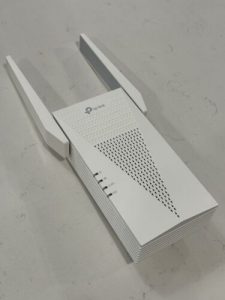
3. TP-Link RE315 – The tiny workhorse
Looks like an essential-oil diffuser and weighs almost nothing, so it never sags in a wall socket. I used the Ethernet jack to resurrect a $15 Sony Blu-ray player that only had wired networking. HD Prime Video streams held steady at 1080p. At under $30 it’s a no-brainer for guest bedrooms or smart-home hubs.
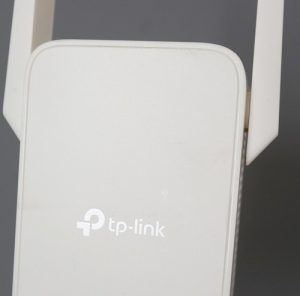
4. TP-Link RE605X – Same success, extra polish
Functionally similar to the RE715X but with a slightly stronger amplifier and TP-Link’s Tether app, which lets you disable LED indicators at night. Ideal for renters who can’t drill holes but still want a bit of control.

5. TP-Link RE655BE – Wi-Fi 7 brute force
When your house has a metal roof and 20 years of dead zones, sometimes you just need raw power. This BE-class extender punched through reflective ceilings and delivered usable signal 70 ft away. Yes, it costs triple a Wi-Fi 6 unit, but for stubborn layouts it may be the last extender you buy.
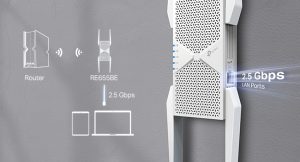
6. Netgear EAX20 – Trailer turned smart home
A single-wide mobile home is basically a Faraday cage; routers in the living room often can’t penetrate to the back bedroom. Dropping the EAX20 midway eliminated buffering on an iPad and even provided an Ethernet jack for a laptop. Setup requires creating a Netgear account—minor annoyance.
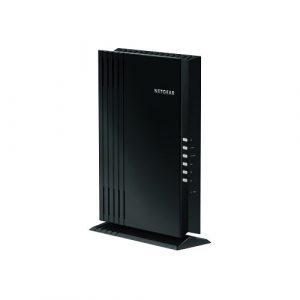
7. D-Link Eagle Pro E30 – Seamless with Xfinity
Mesh-enabled out of the box, it automatically cloned the SSID and password from an Xfinity gateway, so every device roamed without re-authentication. Apps on a Samsung TV now load in seconds instead of half a minute.
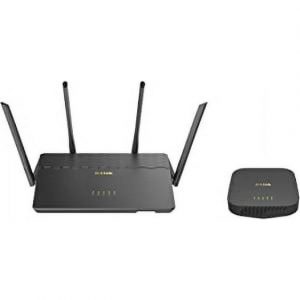
8. D-Link DAP-X1870 – The set-and-forget clone
Very similar performance to the Netgear EAX20 but with an even simpler WPS pairing flow. If you want zero app installs, this is the one.
9. ASUS RP-AX58 – Gamer’s lag killer
My nephew complained of Fortnite rubber-banding in the attic bedroom. We mesh-paired the RP-AX58 with his existing ASUS router and ping times dropped by 35 ms. The built-in Adaptive QoS lets you prioritize a specific console or PC.

Key Takeaways
- Environment beats spec sheets. A $45 extender properly placed outperforms a $180 unit thrown behind a TV.
- Ethernet backhaul matters. If you have a spare Cat-6 run, grab an extender with a Gigabit port (Linksys RE7310, Netgear EAX20) for near-router speeds.
- Match Wi-Fi generations. Pair Wi-Fi 6/6E extenders with Wi-Fi 6/6E routers to avoid unnecessary bottlenecks.
- Metal roofs & brick walls = go high-power. TP-Link’s RE655BE or ASUS’s tri-band options deliver the punch reflective surfaces absorb.
- Budget wins exist. For sub-$30, the TP-Link RE315 breathes life into bedrooms, IoT gadgets, even wired-only Blu-ray decks.
FAQ
Q: How far from my router should I place the extender?
A: Aim for mid-point: 40-50 % signal strength where you install the extender usually yields 90-100 % at the dead-zone end.
Q: Do I need to rename the SSID?
A: If seamless roaming is critical, clone the existing SSID/password. Just remember to do it during initial setup to avoid device confusion.
Q: Will an extender slow down my network?
A: All extenders introduce some overhead. Dual-band units halve throughput if they share the same backhaul radio. Tri-band or Ethernet-backhaul models avoid that penalty.
Q: Mesh system or standalone extender?
A: For one or two dead spots, an extender is cheaper and simpler. If you plan to blanket 3000 sq ft or more, invest in a mesh kit.
Written and tested by a network-obsessed homeowner who hates buffering as much as you do.
“`
